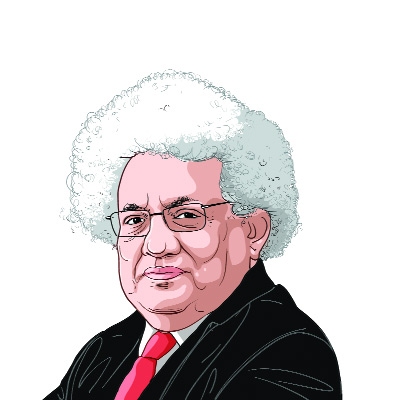Opinion The golden Hindustan
There are certain historic momentsof glory and of humiliation in a nations life....
There are certain historic momentsof glory and of humiliation in a nations life. The defeat in 1962 at the hands of the Chinese was one such but it was avenged when Lal Bahadur Shastri let Indian troops carry the war across the Punjab border in 1965 as also in 1971 when General Niazi signed the surrender.
There was another moment of national humiliation when India had to go with a begging bowl to the IMF after the economy crashed and foreign exchange reserves dwindled to just enough for two weeks of imports. To show how low Indias creditworthiness had sunk,the IMF insisted on a physical transfer of gold and Montek Singh Ahluwalia had to accompany the gold. (It is said that the lorry carrying the gold to the airport broke down but that may be apocryphal.) Forty years of bad economic policies had led to this outcome.
Last week the RBI bought 200 tonnes of gold and this was the redeeming moment. I recognise that this was a technical operation and 200 tonnes is not much by the standards of a Central Bank. But it was still symbolic that after 18 years India had now come back and had to be seen as a solvent and indeed a well-endowed country.
It was Indias gentle way of saying that the dollar was on a downslide and indeed needed a healthy devaluation in the interests of the global economy. But it also gave notice to the G20 and the IMF that if the global economy was to wean itself off the dollar as the sole key currency,there was no viable substitute in sight except for gold. The decision last April at the G20 to strengthen the IMFs capacity to issue SDRs to supplement the dollar as a key asset has been too slow in implementation. The Chinese have tied their currency to the dollar and thus refused to act as a possible key currency power.
That may suit the Chinese who have two trillion dollars tied in US Treasury Bills but the world cannot peg itself to the dollar. India has now acted to signal that it may be that gold is a quick and efficient substitute asset. The IMF can only act as fast as the G20 will advance it the money to float the SDRs. That money has been slow in arriving. In any case a country may acquire SDRs for its reserves but cannot settle its international payments in SDRs. The SDR is a reserve asset but it is not money. It is not a means of payment but only a store of wealth whose value depends on the many currencies in which it is denoted. The supply of SDRs being restricted,bureaucratically,India has now gone to a market-based device.
Gold is money; indeed as good and safe an asset as you can find these days. This could be a portent to an important phase of world economy. It would be ideal if the G20 and the IMF can device a system whereby international flows of foreign exchange reserves would be shared out across different economies. That would stop the world from its over-reliance on the US dollar and save the US from receiving too much cheap credit from the rest of the world. After all,that is how we got into the present mess.
Gold created a problem when it was the guarantee for currency and a country could not expand its money supply if it did not have gold. This became the big problem in the Great Depression and so everyone went off the Gold Standard. Even during the days of Bretton Woods,gold acted as a brake on the ability of the US to issue money. So it broke down when the US could not fight the Vietnam War and have full employment at home without issuing too many dollars.
Now we have none of those problems. Gold is a good asset but not a brake on money supply. Indeed the Rupee will be stronger since RBI bought the gold. This is the fruit of the long march Manmohan Singh began in 1991 when he reformed the economy.





